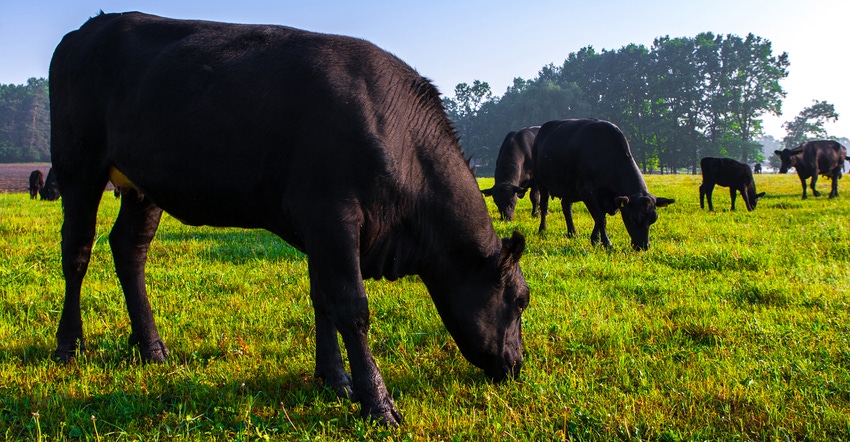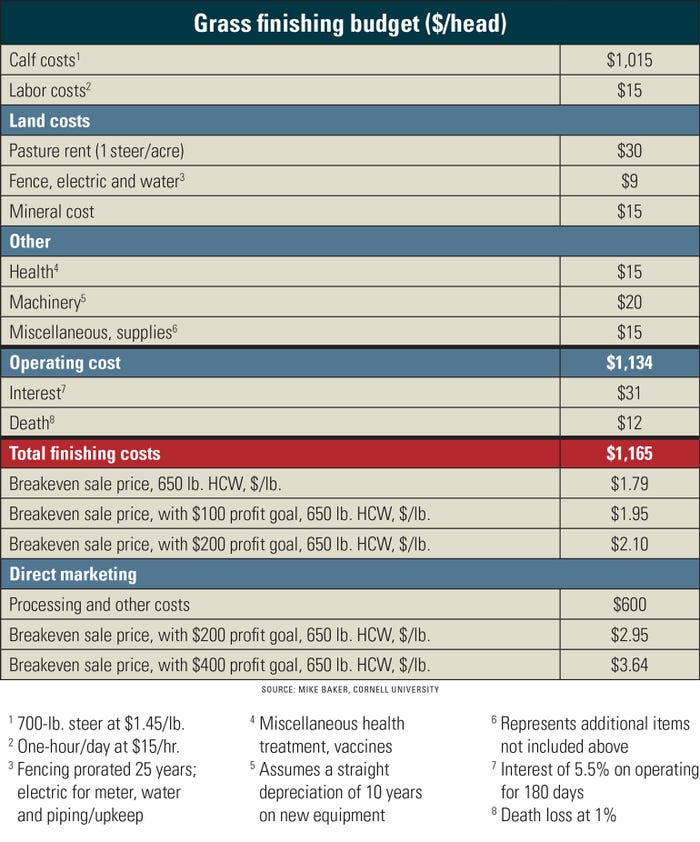
The Northeast is blessed with forage resources and usually adequate rainfall.
Taking advantage of this natural resource provides a competitive advantage for finishing cattle on grass, along with the large population of consumers from Washington, D.C., to Boston. For those with marketing skills or who are interested in partnering with a market that provides this service, we have the production and markets in our region.
I’ve heard from a grass-finished farmer that “the best steak I ever had was grass finished and the worst steak I ever had was grass finished.” This statement tells me that understanding carcass quality is an essential skill to master.
Carcass quality, especially as it relates to grass finishing cattle, is affected primarily by getting the animal processed between 24 and 30 months of age. Going past this runs the risk of tough beef as well as lower-quality grade. Tenderness and flavor are the two most important factors to consumers.
In addition to age, producers need to know when an animal is ready for processing.
A profitable budget
While there is a lot more detail that can be presented on how to finish cattle on forage, the remainder of this column will focus on the economics of this enterprise.
The budget I included below has been adapted from a publication by Jason Rowntree, Michigan State University, and is consistent with other university budgets.
To simplify the budget I started with a purchased steer in the spring gaining 2.5 pounds a day and marketed in November at about 1,150 pounds liveweight or 650 pounds carcass weight.
The steer can be purchased from another producer or as a transfer from your cow-calf operation.

The budget is self-explanatory. I did not include a value for net return. What is calculated is the price per pound of HCW (hot carcass weight) you would need to receive to break even on the grass-finishing and direct-marketing enterprise.
Obviously, breaking even is not economically sustainable, so I added a breakeven for a profit goal of $100 per head and $200 per head.
For the grass-finishing enterprise, you would need to receive a price for HCW of $1.95 a pound and $2.10 a pound for the profit goals of $100 a head and $200 a head, respectively. If selling live, this would equate to $1.07 a pound and $1.16 a pound.
If you are selling into a channel that purchases grass-finished cattle and these expenses are representative of your farm — along with meeting your profit goals — then these are the prices you need.
On the other hand, if your profit goal is lower, then you can participate in these markets and be economically sustainable.
I then took the grass-finished beef and made additional calculations for direct to consumer.
Considering the profit goals of the finishing enterprise and adding profit goals for direct marketing of $200 a head and $400 a head, I calculated the breakeven. The values are much lower than what I expect most producers are selling grass-finished freezer beef: $3.18 a pound and $3.64 a pound for profit goals of $200 a head and $400 a head, respectively. This points to the value of direct marketing.
I hope that this budget provides some insight to you and I would very much enjoy hearing from readers about their costs so I can update the budget.
Baker is a senior Extension associate in Cornell University’s Department of Animal Science.
About the Author(s)
You May Also Like






